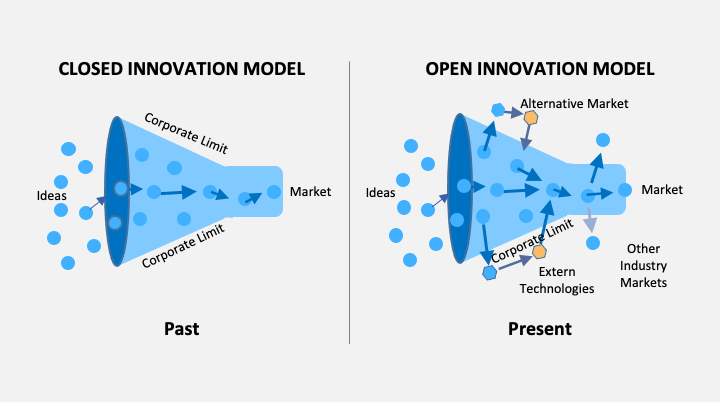There is no widely agreed definition of national innovation systems. National innovation systems are built on the assumption that understanding the interconnectedness of the actors engaged in innovation is crucial to enhancing technical performance. Innovation and technological advancement are the outcomes of a multifaceted network of connections between actors who produce, transmit, and consume various types of knowledge. The manners in which these actors interrelate with one another as components of a social system of knowledge consumption and generation, and also the technology they employ, have a significant influence on a country’s creative performance. The most prevalent actors are public research institutions, universities, and commercial enterprises, as well as the individuals who work for them. Equipment acquisitions, cross-patenting, personnel exchanges, joint research, and a number of other methods can be used to establish links.
The analysis of national innovation systems emphasis on knowledge flows. The focus of analysis is increasingly on enhancing performance in “knowledge-based economies”; economies that rely solely on the application, dissemination, and creation of information and knowledge. Knowledge, as evidenced by technology and human being and, has always been critical to economic progress. However, its relative significance has only recently been known, and this relevance is expanding. The development of high-tech enterprises and the increasing need for extremely qualified personnel show that economic activity is becoming more and more knowledge concentrated. Knowledge investments such as creative work methods, training and education, and research and development, are regarded as critical to economic success.
Furthermore, R&D operations have contributed significantly to the commercialization of new goods and services by a diverse spectrum of corporations and organizations. The amount of resources dedicated to R&D operations by organizations of a country is an indicator of the readiness of the national system for innovative and creative activities. National traditions and taxation have an impact on the volume and breadth of R&D. One of the indicators used to gauge the degree of R&D operations in a country is the % of gross domestic product exhausted on R&D.
The approach to national innovation systems represents the rising emphasis on the economic value of knowledge. The emphasis here is on “mapping knowledge flows” as an adjunct to tracking knowledge investments. The flows, especially those of “codified” knowledge in patents, papers, and other sources, are growing and becoming more visible, owing mostly to advances in information technology. The goal is to examine and assess the primary national knowledge transfer routes, determine bottlenecks, and offer policies and techniques to increase their fluidity. Simply put, this means tracking the links and exchanges that exist between academics, government, and industry in the advancement of science and technology. This sort of study might eventually result to the ability to quantify a national innovation system’s “knowledge diffusion capacity,” which is thought to be a predictor of competitiveness and growth.
A dynamic collection of artefacts, activities, and actors and the interactions such as alternative and complementary relationships, which are required for a population of actors or actors’ inventive performance, constitutes an innovation ecosystem. The media, mentors, entrepreneurs, foundations, private investors, venture capitalists, start up accelerators, businesses, government, and universities are all part of an innovation ecosystem. Each contributes significantly to the development of value in the wider ecosystem by bringing creative ideas to fruition via contact and financial commitment. Federal, state, and local governments may and must all play a role in environmental development. Understanding development, affordable, transit, energy, and water housing are all crucial to growth, as our public-sector partners are well aware.
Closed innovation is based on the concept that internal expertise shared with an iterative method for controlling that expertise may lead to the sustainable growth of new enterprises. Information is retained within the firm and is not shared with anybody outside of the organization. As a result, it seems like the funnel on the left, with solid walls representing the confined but secure internal development process. Open innovation, on other hand is relied on the idea that creative and knowledgeable individuals outside of the organization may further contribute to the fulfilment of strategic goals, and that sharing intellectual property in both directions benefits numerous stakeholders in a variety of ways. The more details acquired, the better informed the final decisions will be. The open innovation funnel seems like a cross between a funnel and a sieve since the growth method is not restricted to employees in the enabling organization. Additionally, the number of concepts has grown. Since not every piece of information could be exchanged with the outside world, having thousands of consumers’ feedback could lead to a considerable competitive edge.
Read More:
By supporting the active flow of information and resources, innovation ecosystems enable ideas to become a reality. With these ecosystems, a mechanism is established that will enable more entrepreneurs and innovators to design and deliver solutions to real-world problems more quickly. This method fosters competence in new industries, aids in economic diversification, and enables enterprises to reach out to clients no matter where they are. An innovation ecosystem also fosters resource sharing and economic stability.
Further, the start ups are generating employment and possibilities. However, it must not be neglected that they are also developing new technologies that are applicable to a wide range of sectors and audiences. They are communicating with everyone in the ecosystem, finding essential partners, and transforming in-kind and monetary donations into physical products which will change the way everyone lives.
The innovation ecosystem’s value may be found in the availability of resources for start ups as well as the exchange of knowledge among ecosystem players. The information flow opens up new investment potentials for the appropriate institutions by connecting them with the appropriate ideas for their portfolios and businesses for the correct reasons and at the appropriate time.
